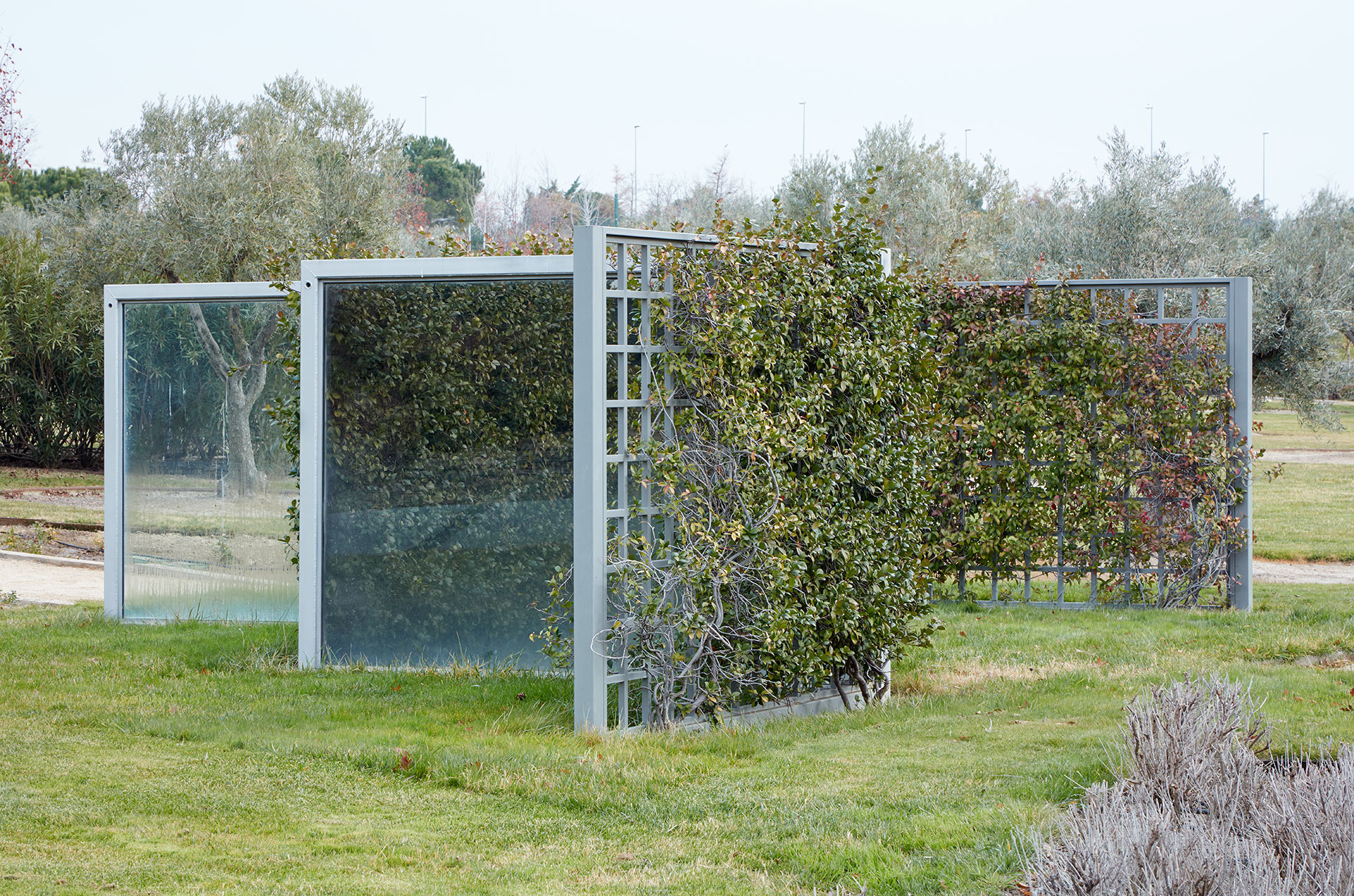
Dan Graham (URBANA, ILLINOIS, ESTADOS UNIDOS, 1942 – NUEVA YORK, ESTADOS UNIDOS, 2022)
Two-way Mirror and Hedge Labyrinth
1989
WORK INFORMATION
Zinc-sprayed steel, two-way mirror, clear glass and blue cypress trees and common jasmine, 220 × 600
In 1964, the multifaceted artist Dan Graham was running an art gallery in New York where he showed the early work of minimalist and conceptual artists. In 1965 Graham launched his own artistic career in various fields, from conceptual pieces for publication in a magazine to video works and installations, while also pursuing his vocation as a writer. Glass, video cameras and transparent, penetrable spaces appeared in his first video projects in the 1970s and in later installations where he explored the body, reflection, the experience of individual viewing and visuality as a social phenomenon, and surveillance systems. From his initial conceptual stance and subsequent works, Graham has maintained his interest in creating sculptures that are open constructions which blend in with their surroundings and duplicate the images of nearby spectators in a game of reflections and echoes.
Two-way Mirror and Hedge Labyrinth is an example of the type of works Graham began producing in 1978, his "pavilions". These are sculptures directly related to the place they occupy, whether it is a building vestibule, a public park or a landscape. They adopt different geometric shapes, though there is a predominance of cubic forms like those in Two Adjacent Pavilions, the first work of its kind. Sometimes the cube is open on one or more sides, unfolding to encompass a larger space, or even reduced to two planes at an angle. Materials are chosen specifically to create reflections and transparencies, allowing visitors to see into the sculpture while also experiencing the blockage of the mirror that sends their own image back to them. Graham frequently uses two-way mirrors, transparent on one side but not on the other, devices often employed in modern architecture but also in security and surveillance systems as they allow observers to see without being seen. This double possibility—a spatial-visual experience and the disturbing sense of being watched—is implicit in several of his pavilions, just as it was in his early conceptual creations.
Graham powerfully intensifies the sensory experience of the observer, to whom his work is ultimately addressed. His creation is enveloping, and those who traverse it find themselves repeated while also observing the setting reflected in the enclosure. Graham's art attests to his interest in the recreational pavilions found in princely palaces and gardens from the 18th and 19th centuries, small spaces filled with mirrors, windows and pergolas. In the work pictured here, the pergola is suggested by the wooden lattices, an element inspired by Japanese shoji screens which the artist has used on several occasions. Transparencies and reflections multiply and expand the view of the natural setting—here consisting of a hedge and jasmine bushes—to give the place new visual and metaphorical meaning. [Carmen Bernárdez]

